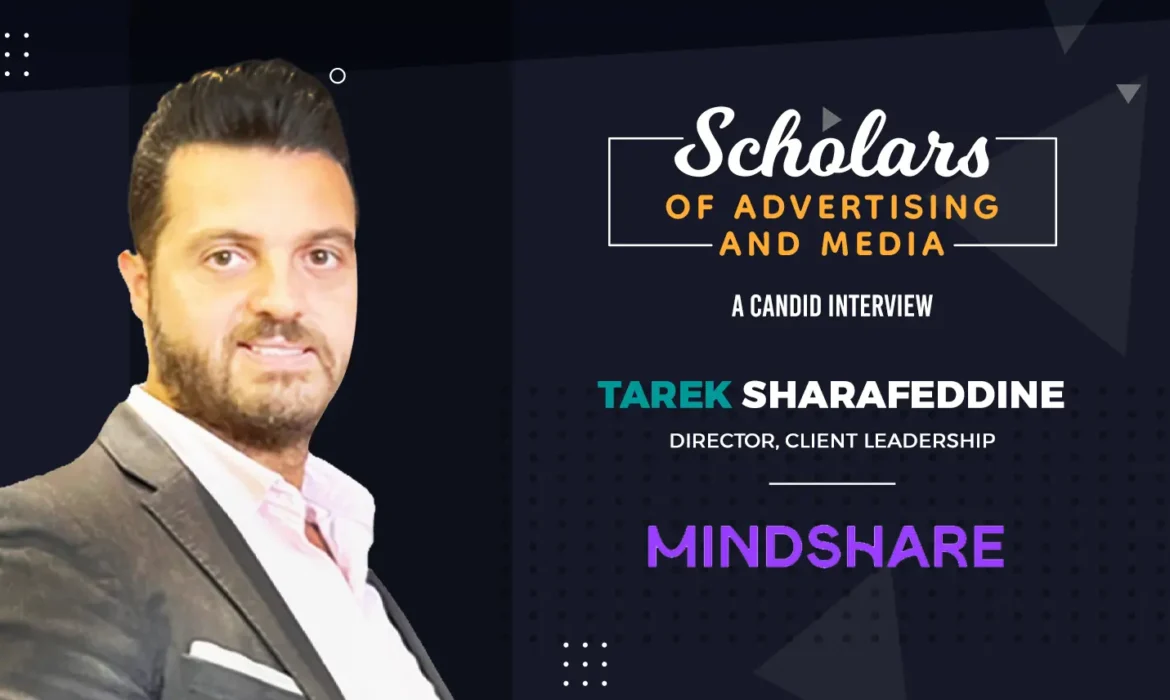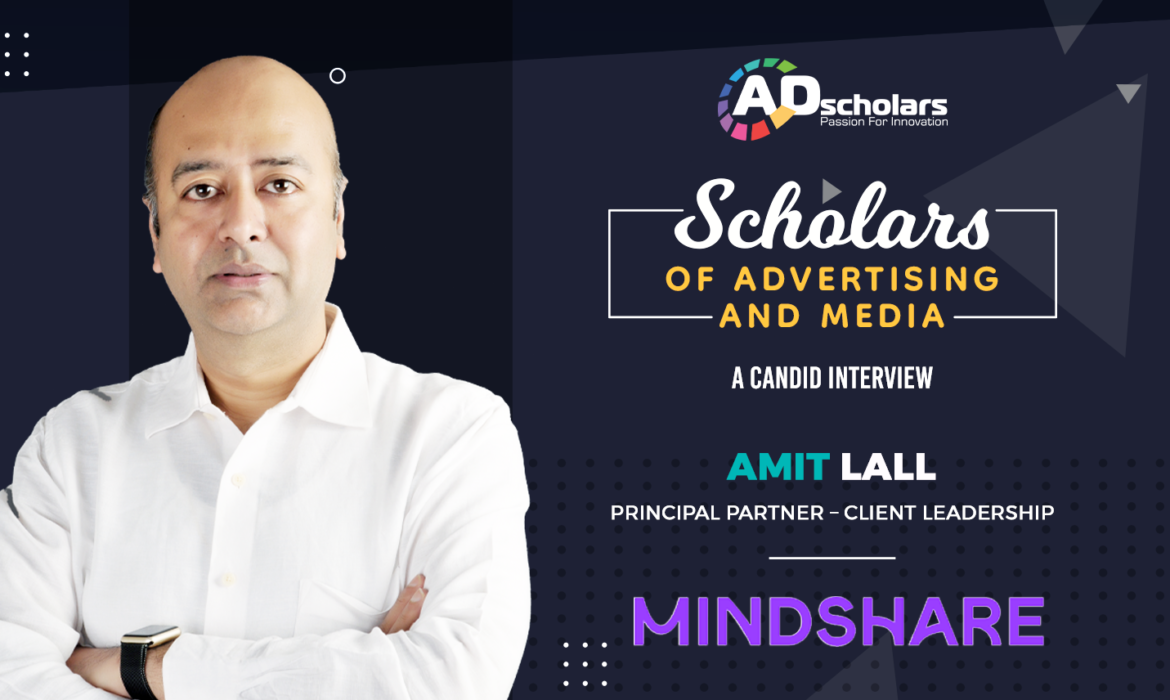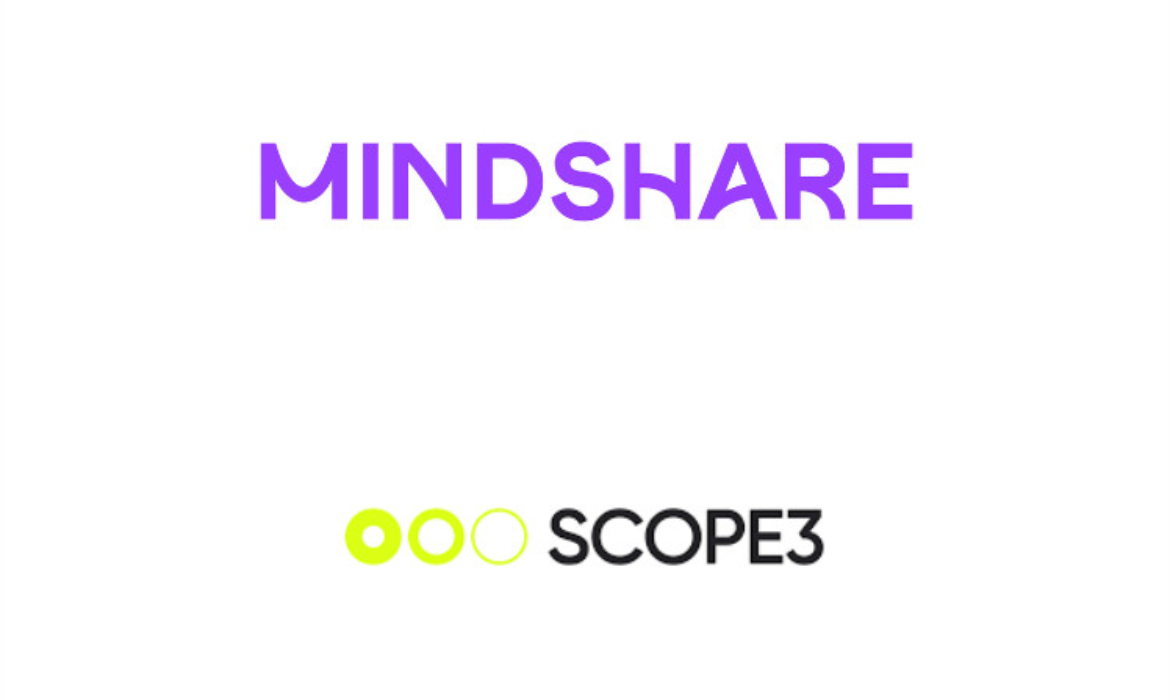Mindshare’s Tarek Speaks: Illuminating Media Innovations Amid Saudi Arabia’s Evolution
Tarek Sharafeddine, the Director of Client Leadership at Mindshare, brings 15 years of dynamic experience in the media industry, he possesses invaluable insights. His impact spans various sectors, from Telecom to FMCG, where he employs a strategic approach focused on continuous learning, strategic partnerships, and creating customized media solutions for the distinct challenges of each industry.
In an exclusive and candid interview, he delves into the ever-evolving Saudi media landscape. His strategic expertise extends to comprehensive campaigns, fostering key relationships, and embracing the latest innovations.
In your 16 years in the industry, how have you witnessed the Saudi Arabian media landscape evolve, and what specific challenges and opportunities has this evolution presented?
The media and advertising landscape has undergone a transformative shift, largely influenced by the rapid adoption of digital technologies. Traditional media outlets, such as television and print, have faced challenges as online platforms gained traction. Social media platforms like Twitter, Instagram, and Snapchat have become integral to communication and advertising strategies. Additionally, Saudi Arabia has witnessed increased investment in local content creation and a focus on cultural relevance in advertising campaigns. The lifting of the ban on cinemas in 2018 has also contributed to a more diverse entertainment landscape, impacting how advertisers reach and engage with consumers.
Reflecting on your career, can you share an instance where your strategic relationship-building skills were instrumental in not just project success, but in fostering long-term partnerships?
I vividly remember receiving a call from a new client inquiring about a straightforward cost estimate for a small InMall campaign. While it could have been perceived as a routine request, we went the extra mile by securing a meeting with them. During the meeting, we thoroughly discussed the array of services we could offer to contribute to the growth of their business. Subsequently, we presented a comprehensive strategy complete with committed KPIs and additional value. Our aim was to ensure that this campaign not only became a prominent topic but also a success. Fortunately, our efforts paid off, leading to the successful negotiation of a three-year contract with a respectable budget.
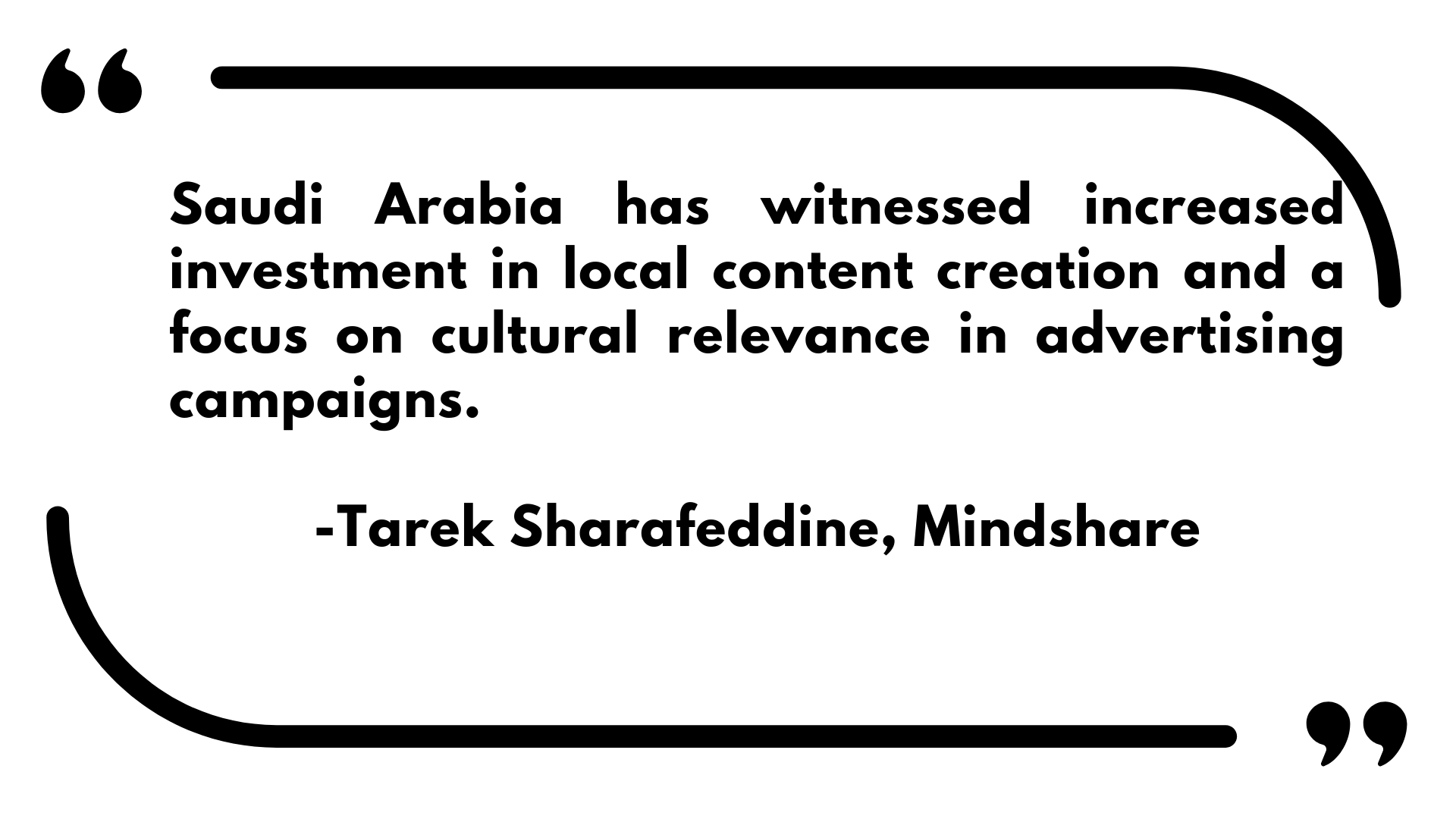
In working with Telecom, Governmental, Banking, Automotive, and FMCG, how do you customize media solutions for each industry?
Customizing media solutions for each industry involves a comprehensive approach to align strategies with the unique characteristics and challenges of the target sector. This begins with an in-depth analysis of industry trends, competitive landscapes, and regulatory environments. Audience personas are then developed, detailing demographics, preferences, and media consumption habits specific to
the industry. Content is crafted to be industry-relevant, incorporating sector-specific terminology and examples that resonate with the target audience.
Careful consideration is given to the selection of media platforms, tailoring distribution strategies to where the industry’s audience is most active. The tone and style of messaging are adapted to match the industry’s cultural norms, whether formal and professional or casual and conversational. Solutions are positioned as addressing industry-specific challenges, with integration into relevant events or
conferences to enhance visibility.
Collaboration with industry influencers and thought leaders is sought to boost credibility. Data analytics inform decisions, ensuring strategies remain effective and aligned with evolving industry dynamics and regulatory compliance. Continuous feedback collection and iteration based on insights gained contribute to the ongoing optimization of media solutions for sustained impact within each unique industry landscape.
Given the dynamic nature of the media industry, how do you ensure you stay informed about the latest trends and innovations? Can you share an instance were staying updated led to a strategic advantage for a client?
In addition to the pivotal role of connections and relationships in our business, active participation in conferences, events, and professional networks, coupled with subscriptions to key marketing trend sources, provides a significant advantage. This approach ensures early access to new products and beta versions, enabling clients to be pioneers in testing them. I’ve witnessed numerous instances where introducing clients to “first-time use products” resulted in remarkable outcomes, achieving nearly three times the anticipated key performance indicators (KPIs). This underscores the strategic importance of staying informed and leveraging innovations to consistently deliver exceptional value to
clients.
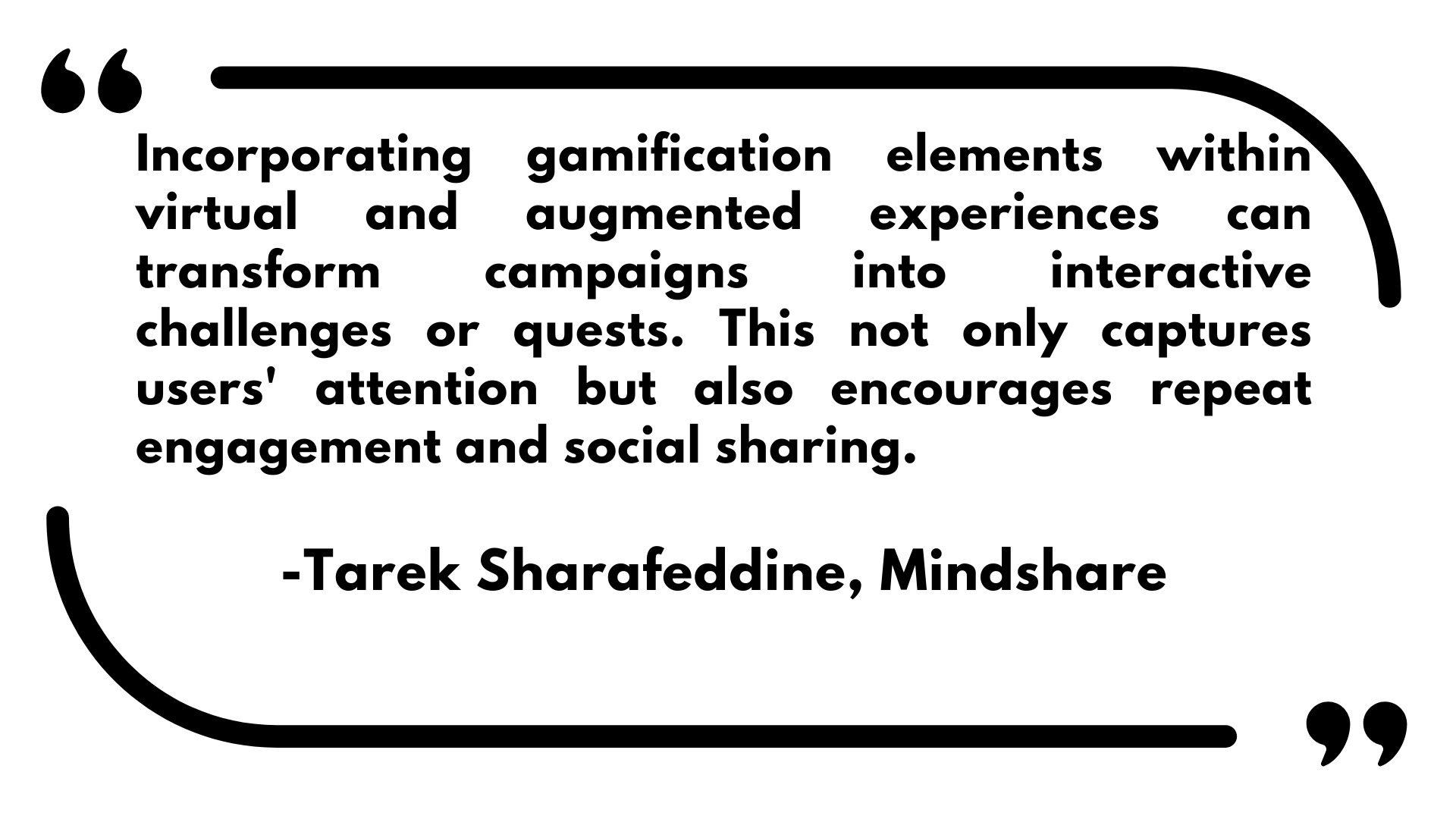
Can you highlight a particularly successful media campaign and outline the key strategies that made it successful?
We initiated a comprehensive full-funnel campaign, placing primary emphasis on achieving lower-funnel outcomes during the Ramadan period. Our approach to the brief involved meticulous identification of objectives and key performance indicators (KPIs), followed by a thorough analysis of the target audiences. This enabled us to tailor our media strategy for optimal reach and resonance.
Employing a multichannel strategy, we carefully selected a mix of traditional, digital, and influencer channels. This encompassed the utilization of multiple regional TV channels and a diversified set of integrated solutions, including sponsorships, special on-screen executions, and a compelling call-to-action for launching the offer. The call-to-action design incorporated multiple creatives,
specifically targeting different packages with varying commercial lengths.
To ensure effectiveness, we employed special solutions for tracking and optimizing the performance of each TV channel, sponsored program, and spot. Notably, we successfully measured the return of on-screen executions within a selected series on an active channel for the first time. Direct conversions in the lower funnel were measured, affirming the efficacy and efficiency of our new channel mix. This achievement translated into a 12.3% increase in website visits and a 12.7% surge in app downloads in the lower funnel. Additionally, our efforts contributed to an impressive 86% increase in awareness and a 29% boost in consideration in the upper funnel.
The strategic use of TV as a performance tool played a pivotal role in driving tangible results and high-quality traffic to the client’s website.
Given the rise of interactive and immersive technologies, how do you envision incorporating virtual experiences or augmented reality into future media campaigns to enhance client engagement?
Expanding on the incorporation of virtual experiences and augmented reality (AR) into future media campaigns, the potential applications are vast. For instance, virtual events and trade shows can provide immersive brand interactions, allowing attendees to explore virtual booths, attend product demonstrations, and engage in real-time conversations with representatives.
In retail, augmented reality can revolutionize the shopping experience by enabling customers to virtually try on clothing, accessories, or even visualize furniture in their own living spaces. Furthermore, incorporating gamification elements within virtual and augmented experiences can transform campaigns into interactive challenges or quests. This not only captures users’ attention but also encourages repeat engagement and social sharing.
The future of media campaigns lies in creating participatory brand experiences through virtual and augmented realities, aligning with evolving consumer expectations for more engaging and interactive content.
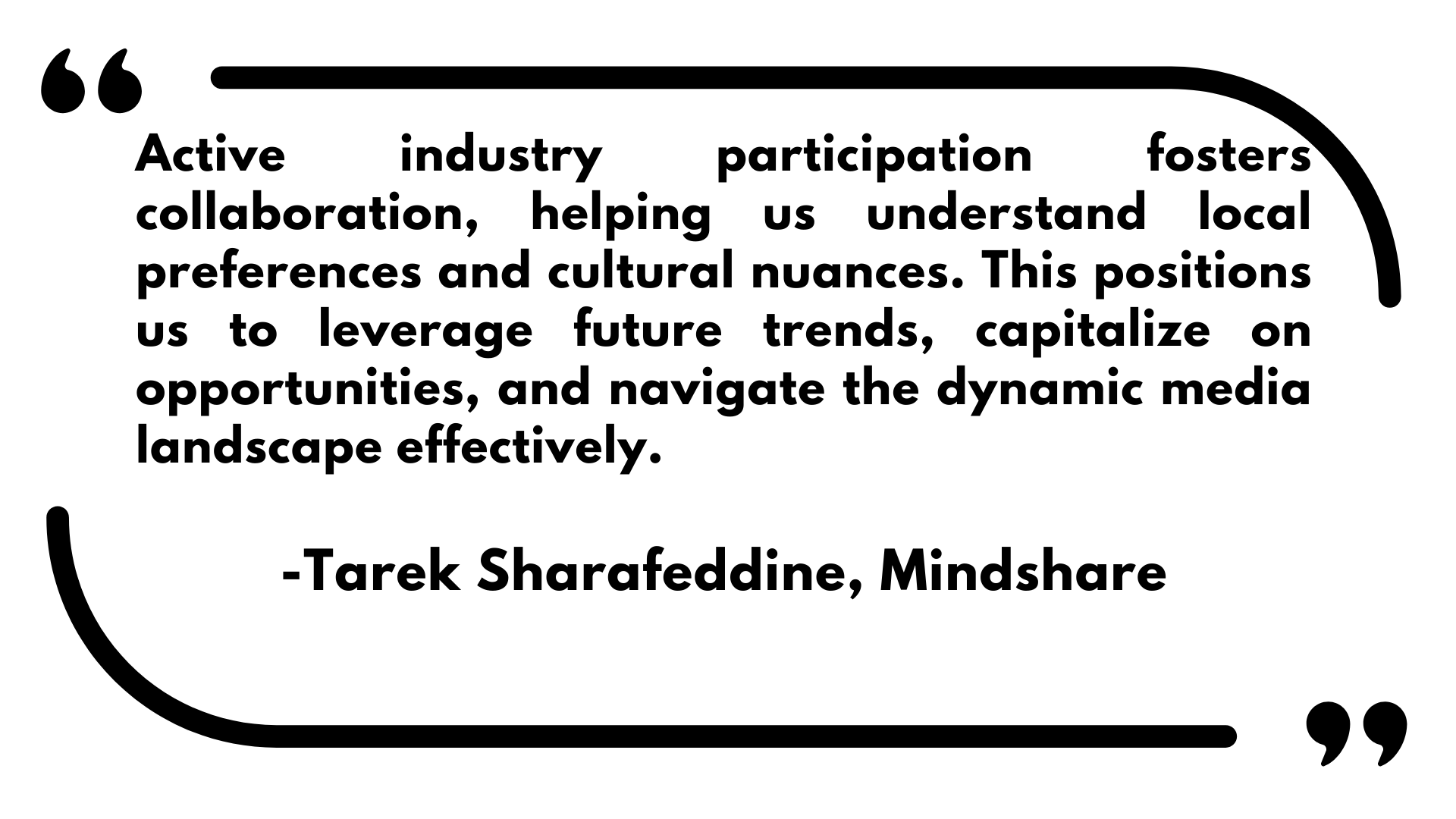
Looking ahead, how are you strategically positioning yourself and your team to adapt to the future trends and opportunities in the evolving media industry in Saudi Arabia?
To strategically position ourselves for the evolving media landscape in Saudi Arabia, continuous learning and skill development are paramount. We prioritize staying updated on industry trends, fostering a data-driven mindset, and embracing digital transformation, including emerging technologies like virtual experiences.
Actively participating in industry events and networks allows us to understand local preferences and cultural nuances, while encouraging collaboration within cross-functional teams. This holistic approach positions us to leverage future trends, capitalize on emerging opportunities, and navigate the dynamic media industry landscape effectively.
In Conversation with Mindshare’s Amit Lall: Mastering Digital Dynamics
Amit Lall, Principal Partner at Mindshare, brings two decades of expertise in telecom, technology, and digital planning. He oversees digital strategies for diverse sectors, prioritizing consumer-centric solutions powered by data.
In this exclusive interview, his insights will unveil the evolving media landscape, technological adaptations, and future trends, offering readers a glimpse into transformative digital initiatives propelling clients to sustainable success.
As an accomplished expert with over two decades of experience in this industry, can you walk us through your background and your experience working as the Principal Partner / Digital Lead – Client Leadership at Mindshare?
Mobile and technology have been my lifelong passions. I embarked on my professional journey with the telecom industry, initially in sales and later transitioning into product management, eventually finding my way into the realm of digital planning. This path has been characterised by a multitude of highs and lows, each contributing to my growth. Presently, I serve as a Principal Partner at Mindshare, where I oversee digital for West 1 cluster. The continually evolving digital landscape, coupled with the increasing influence of cutting-edge technologies like AI and ML, ensures that my work remains both exhilarating and challenging.
A wide range of clients come under your wing, from Fintech to Telecom to Fashion. How do ensure that the strategies employed for these sectors resonate with the specific audiences? Are there different digital strategies for each of them and if so, how do they differ from each other?
In the ever-evolving realm of brand management, a one-size-fits-all solution is elusive. Crafting effective strategies relies on a meticulous understanding of the specific objectives tied to the media task at hand. Our approach is tailored to align with the unique goals each brand aspires to achieve. Throughout the formulation process, we prioritize understanding the brand’s position in the consumer funnel. Whether the brand is emerging, established, or grappling with low consumer consideration, recognizing the brand’s needs is vital. We require absolute clarity on these points before delving into the realm of solutioning.
Furthermore, comprehensive details on the brand, its category, and its competitive landscape are indispensable. The better we know your brand, the more refined our solutioning becomes. These insights play a pivotal role in shaping communication and deployment strategies. Our solutioning is focused on an an audience-first approach, supported by robust data, powerful insights, and compelling content. By addressing these critical questions and staying committed to an audience-centric approach, we ensure that our solutions are not just effective but also resonate with the core essence of the brand.
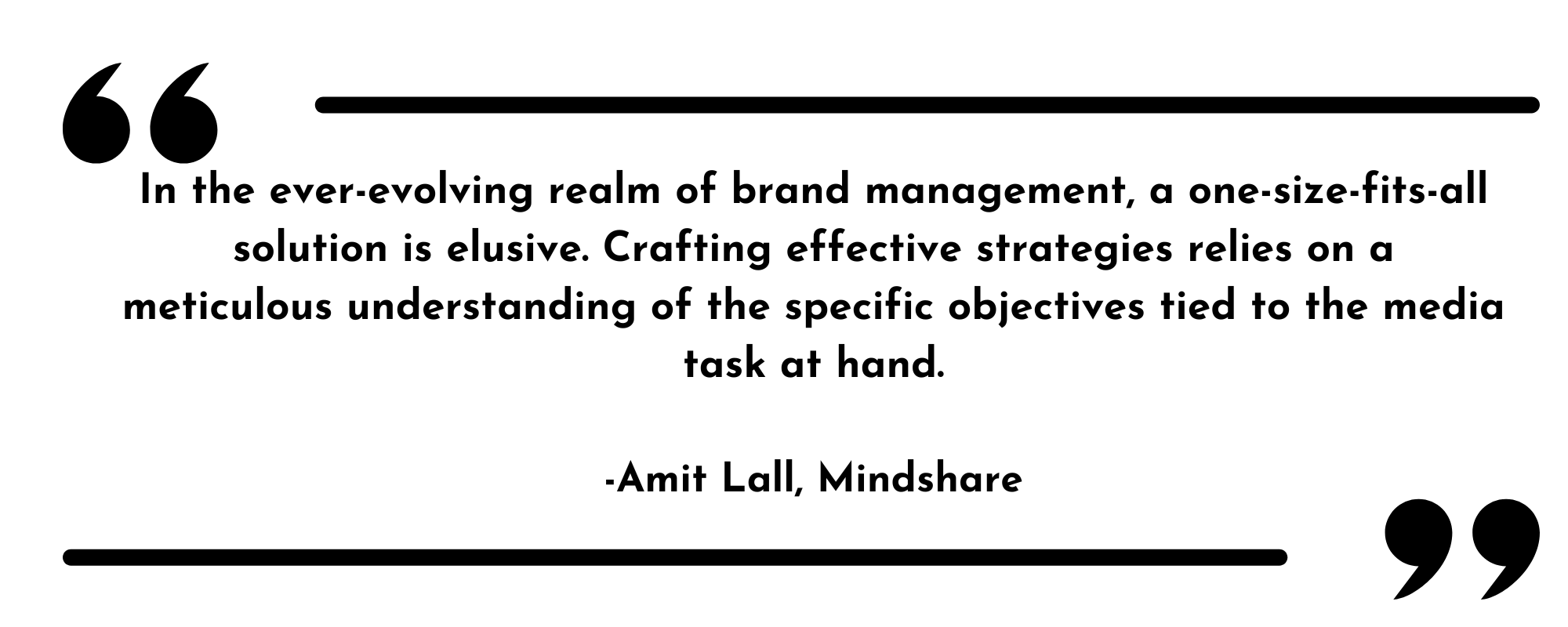
In the context of cutting-edge technologies such as Generative AI, Metaverse, and 5G, how have you prepared yourself to embrace them? How have they disrupted the advertising industry?
To be transparent, navigating the multitude of changes in the tech space, whether in Generative AI, the Metaverse, Blockchain, or Web 3.0, can indeed be challenging. However, working in the digital industry provides a unique advantage, offering exposure to numerous startups and tech enthusiasts. This exposure allows firsthand experiences with technologies and helps understand their true potential, which can be leveraged for user experience, engagement, and performance enhancement.
At Mindshare, we’ve always championed the ethos of leveraging technology and staying at the forefront for our clients. These cutting-edge technologies are seamlessly integrated into our tactical deployment strategies, contributing significantly to our client’s success by delighting their consumers. A testament to this commitment is our pioneering adoption of the Metaverse for clients in the auto and beverages categories. Additionally, we boast numerous success stories stemming from the strategic deployment of AI/ML tools, resulting in superior media outcomes that have played a pivotal role in driving growth for our clients.
Your 20 years of experience in this industry must have given you a unique perspective on the changes and evolution of this industry. Do you see any emerging trends? What preparations do you have in place to face them?
Over the past two decades, we’ve witnessed a remarkable transformation in the media landscape. What was once at the periphery of media choices is now inching towards dominating it. The sheer scale and technological advancements in the digital realm have not only propelled its growth but also led to a significant reshaping of budget allocations. Digital media is not only growing but also taking money away traditionally allocated to TV through connected TV, OOH through DOOH, and radio through streaming music apps.
With continuous push and support from the government, digital penetration is at an all-time high. This has translated into massive adoption of smartphones, complemented by cheap data plans to drive usage and high-speed connections across 4G and 5G networks for a superior experience. As these factors converge, we foresee our future trends being dominated by big query data, driven by the prowess of Generative AI and ML.
AI and ML are not only about automation and predictive analysis but also about multiple messaging or personalization at scale. The adoption of Connected TV (CTV) is poised to outpace growth projections at an accelerated pace. Furthermore, we anticipate that full-funnel deployment will become the new norm, as advertisers seek comprehensive strategies covering every stage of the consumer journey. Lastly, I believe retail media will continue its dominance, reflecting the evolving dynamics of consumer behavior and preferences.
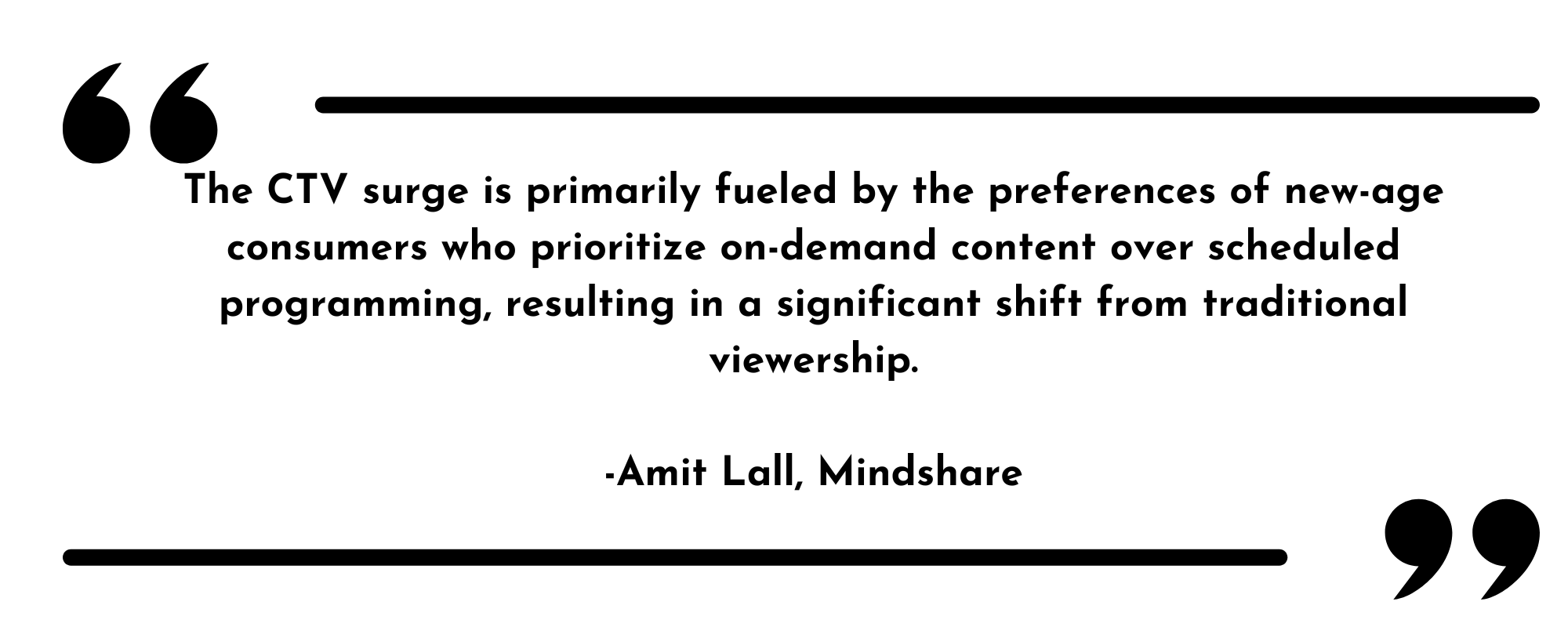
Consumer viewership habits have also evolved over the period of time. What metrics and goals do you look to accomplish for CTV vs Mobile advertising? Can you throw some light on the CTV advertising landscape in India?
India’s CTV ecosystem is experiencing unprecedented growth, reaching 33 million households in July 2023, a substantial increase from the 11-12 million recorded in January 2022. Projections from the GroupM Finecast report suggest a trajectory toward 50-60 million households by the end of 2025. This surge is primarily fueled by the preferences of new-age consumers who prioritize on-demand content over scheduled programming, resulting in a significant shift from traditional viewership. The convenience of accessing content anytime, anywhere has prompted a surge in viewers cutting the cord and embracing CTV. For advertisers, the appeal lies in the larger screen and premium ad environment, translating to a more impactful reach, with key metrics centered around impressions, viewability, and overall reach.
Digital marketing is a rapidly evolving landscape in which, Programmatic digital out-of-home (pDOOH) seems to be the new trailblazer marketing strategy everyone wants to undertake. What are your thoughts on this?
Digital OOH has changed the role of the OOH medium. From just being a ‘reminder’ medium, DOOH has also made it a medium to enhance imagery. The OOH industry has historically grappled with challenges related to transparency and measurement. However, with the emergence of pDOOH, both of these concerns are being addressed. Unlike the static-only medium, pDOOH provides a plethora of options, allowing you to play with formats such as video, staticads, and GIFs, enabling sharper targeting, and in some cases, even retargeting your consumers. These possibilities make this medium more effective.
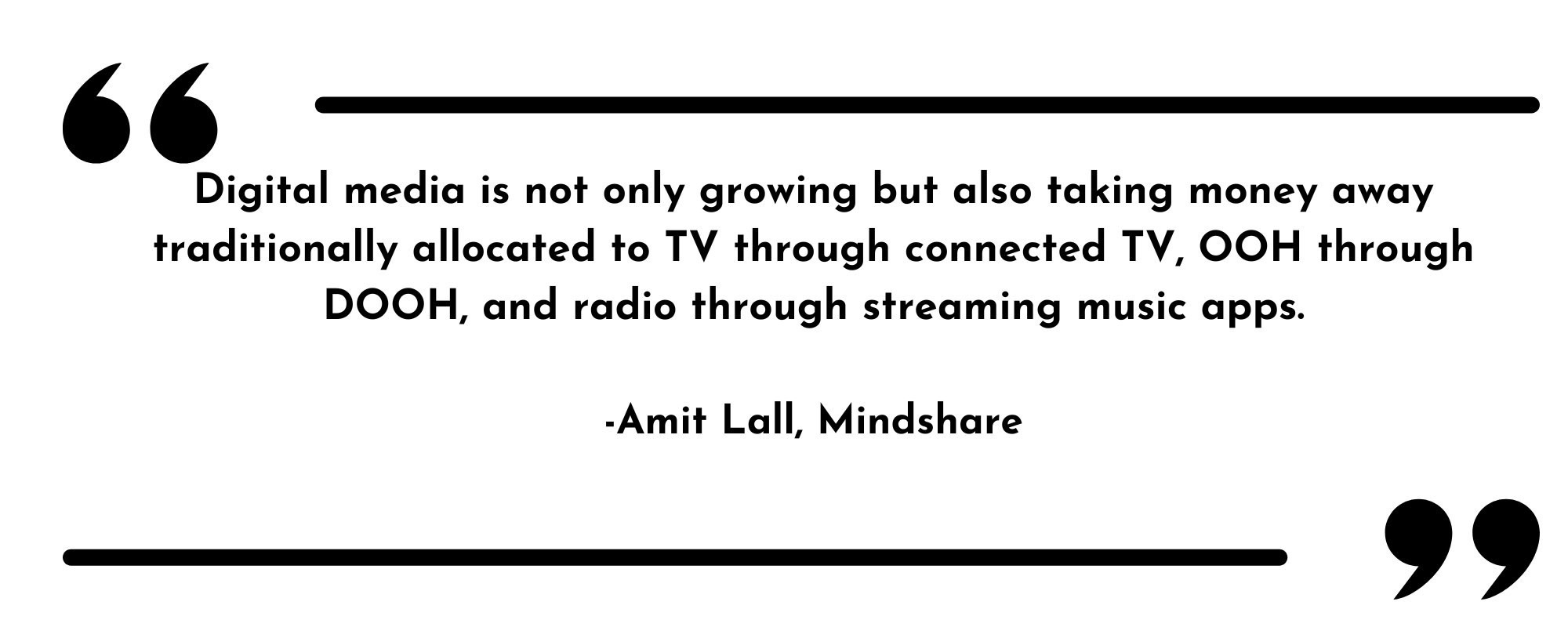
Have you ever run a marketing campaign that presented an unexpected challenge or outcome? How did you implement the lessons learned?
All campaigns are unique and designed with business objectives in mind. Based on the objectives, our solution isalways consumer-centric, powered by data. To drive engagement, we use dynamic creatives at scale, keeping the consumer’s journey in mind.
Any words of advice you would like to share with the young professionals about navigating through the ever-evolving marketing landscape?
My advice to young professionals is to stay curious and keep upskilling to adapt and stay relevant in the ever-changing media landscape.
Mindshare and Scope3 Develop Emission Scorecard for Digital Campaign
Mindshare, a media services company affiliated with GroupM and WPP, and Scope3, a collaborative sustainability platform that reduces carbon emissions in media and advertising have developed a customized Emissions Scorecard. Clients will benefit from this tool’s ability to comprehend the carbon emissions of their digital media campaigns.
Insights on Carbon Emissions from Digital Media Activities
Mindshare’s clients will have access to real-time carbon emissions data for the first time on their digital media activities at the macro (business category, brand, country, and publisher) and micro (creative format, media type, and ad environment) levels. The Mindshare and Scope3 teams have been working together for the past year and a half to refine the way emissions are measured and develop a cutting-edge emissions reporting tool for brands.
Mindshare Emissions Dashboard
The Mindshare Emissions Dashboard was created with Scope3 to report emissions of digital media activity. This is in accordance with GroupM’s carbon decarbonization methodology. Marketers can thus balance the demands of greener media with those of successful business outcomes.
Read More: GroupM Bolsters Media Decarbonization with SeenThis Partnership
Sustainable Approach
The Mindshare “Report, Reduce, Remove Initiative” included the creation of the Emissions Dashboard. This sustainable step-by-step approach aims to maximize investment in greener choices throughout the media supply chain. Furthermore, it looks to minimize disruption to business requirements. Mindshare is the only organization in the sector dedicated to the Science Based Targets initiative (SBTi). Therefore, as an agency, it must implement its reduction efforts without sacrificing effectiveness.
Carbon emissions from different media sources
A combined 7.2 million metric tons of emissions are produced annually by digital, display, and streaming advertisements, according to Scope3’s Q2 2023 State of Sustainable Advertising report. When broken down by channel, streaming contributes 3.4 million metric tons and display advertising makes up more than half (3.8 million metric tons) of the total amount worldwide.
Here’s what they said
Dhruv Menon, Director at Mindshare said,
By giving marketers a 360-degree view of the carbon impact of their digital media activity, the dashboard enables change-making conversations and discussions with advertising and publisher partners. More importantly, it will also empower media practitioners to make sustainable media buying choices with a goal of eventually reducing 50% of all digital emissions by 2030.
June Cheung, Head of JAPAC for Scope3 stated,
Scope3 emissions data pinpoints exactly where marketers can take simple, yet meaningful, actions to reduce the carbon footprint of their digital advertising. It simultaneously helps the industry more clearly see and de-fund waste across the ad ecosystem. This type of industry-wide change is only possible if marketers have the tools that allow them to make informed decisions. By being able to access emissions data directly alongside campaign data, like the Mindshare Emissions Dashboard, sustainability is no longer an afterthought, it becomes a valuable lever for improving campaigns.
Read More: Magnite Partners with Scope3 to Enhance Advertising Sustainability

